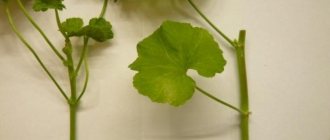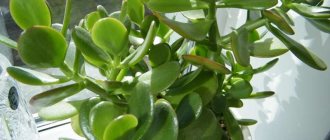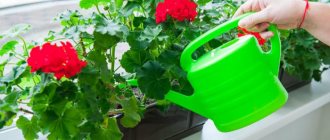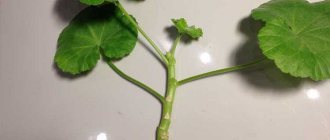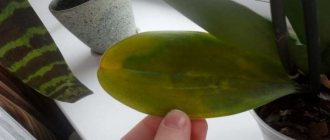Geranium rightfully occupies one of the places of honor on the list of favorite indoor plants. It is also successfully used to decorate balconies, terraces, garden plots and street flower beds. A variety of colors, unpretentiousness and ease of reproduction are the undoubted advantages of this plant.
The cutting method is one of the most common for propagating geraniums. It can be used all year round, but the best time for excellent results is spring. This method seems quite simple, but following a few rules will allow you to grow beautiful, spectacular plants.
Is it possible to plant like this?
Due to the ability of geranium to survive and continue to grow even in unfavorable conditions, it can be propagated without the use of roots. But in general there are three ways to propagate this crop:
- seeds;
- division of roots;
- cuttings.
The first method takes too much time and patience, because in order to germinate the seeds, you need to provide strictly defined conditions, the second is quite risky, since the delicate roots are very easy to damage during their division, but the third, by cuttings, is preferred by most people involved in growing and breeding geraniums.
The main advantage of this method is the ability to propagate a plant without disturbing its roots, which guarantees the complete safety of the mother plant.
Propagation by cuttings gives almost one hundred percent positive results in a relatively short period of time.
What is a cutting, how to choose and prepare it correctly?
A shoot, or cutting, is a cut part of a plant with one or more nodes. This cut off part is precisely used for vegetative propagation (by cuttings). In order to get a new geranium, completely identical to the previous one, you first need to select this cutting.
When should you take a cutting from the mother flower in order to plant and grow a young plant? The mother plant should be well developed and absolutely healthy, ideally it should be 2 - 3 years old. You need to select the apical cuttings of the mother geranium. This process should be 7–8 cm in length, have one or more nodes (buds, growth points) and 3–5 leaves. If there are leaves left at the base of the cutting, they must be carefully removed.
If the branches of the shoot are the same length as the shoot itself, then you definitely need to cut them off, and then you can use them as independent cuttings. And the finished shoots are left in the air so that the cut areas dry out. If after a few hours they are covered with a thin film, it means that everything went well and the cuttings are ready for the next stage.
Some gardeners recommend sprinkling the cut areas with crushed activated carbon and leaving the cuttings in a dark place for a day.
If something went wrong
- In the first days after rooting begins, the leaves of the cuttings wither and need to be cut off.
- The cuttings rot at ground level - it is recommended to root them again by simply cutting the stem to a healthy part, drying it and re-rooting it in new soil.
- The leaves dry out and turn yellow. The reason for this may be a lack of moisture. To correct the situation, you simply need to increase the volume of watering.
- Geranium does not bloom. This is a consequence of improper care, namely, non-compliance with the plant regime (winter dormancy is not ensured). Another reason is that the pot was chosen too large.
- The leaves become limp, rot appears on the stems - this is a sign of overwatering. It is necessary to reduce watering. If this does not help, the plant should be replanted so that it does not die.
Over the years, the geranium gradually exposes the lower part of the trunk. A fluffy, dense bush with a huge number of flowering shoots suddenly turns into an ordinary stick with rarely flowering arrows. To prevent this from happening, it is necessary to take cuttings correctly, following all the recommendations of experienced gardeners.
Experienced gardeners do not always resort to cuttings of geraniums, as the plant loses its decorative appearance. A more common method is reproduction
seeds
. Read our articles about
what does seed look like?
and how to get it at home.
How to carry out the procedure?
The cut shoots do not yet have roots, which are necessary for the development of full-fledged geraniums, so after their preparation it is necessary to root the cuttings. This can be done in water or directly in the prepared substrate.
Rooting cuttings in water
How to propagate a plant by placing cuttings in water? The main advantage of this method is the ability to observe the process from beginning to end and not miss the moment when the shoot has roots and can already be planted in the substrate.
Prepare a small transparent container (disposable cups work great).- Pour settled water at room temperature into a container up to about half a glass (5 cm).
- Place the shoots in water.
- Change the water once every 2 days.
- After about a week (during this period the first roots should appear), transplant the rooted cuttings into the prepared substrate in a container of a suitable size.
Rooting in water also has its significant disadvantage: sometimes the cutting can rot before it even takes root, and in order to prevent this, gardeners strongly recommend adding crushed activated carbon to it for disinfection every time you change the water.
Using this method, you can get beautiful and healthy geraniums.
Rooting in the ground
Is it possible to plant a cutting without roots directly into the ground? Thanks to rooting in the ground, you don’t have to worry about the shoots rotting, since this happens extremely rarely, but you won’t be able to see when the roots will appear, which is why the planting material sometimes gets spoiled by being replanted ahead of time. How to plant correctly can be read in the instructions:
Prepare a substrate from garden soil and peat.- Place the prepared soil in a small container, moisten it generously and compact well.
- Choose a place with sufficient diffuse lighting. Cuttings really do not like scorching rays.
- Place the shoot into the substrate to a depth of 4–5 cm and again compact the soil around it.
- Waiting for new leaves to appear on the cuttings means that it has successfully taken root and is ready to be transplanted into a full-fledged pot. This will take about a month.
Landing Features
When to plant or transplant this flower? You should be guided by two criteria:
Appearance of the plant : if the flower grows very slowly, but is properly cared for, then this most likely means that it is time to plant it in another, larger pot.- Soil inside the pot : if after watering, the soil dries out quickly enough, this means that the roots of the flower have grown, and it’s time to change the pot to a larger one.
There is also a universal method that will help determine whether it is time for a transplant or not. You need to remove the plant from the pot and carefully examine the lump of earth. If the roots literally penetrate right through the ground and there are a lot of them, then it’s time to replant the plant.
Watch a video about transplanting geraniums:
General Tips
- Ideally, it is better to replant geraniums in the spring . It is necessary to prepare in advance a larger pot into which the flower will “move”.
- It is not necessary to replant the geranium into a new pot, but it must be disinfected . Also, to transplant geraniums you will need a watering can with water and fresh soil.
- It is not advisable to replant geraniums during flowering, but it is possible . If possible, it is better to avoid this.
- To remove geraniums from an old pot, you must first water it . And then you need to hold the pot with one hand, and carefully pull the flower with the other. As a last resort, there is an option to use a knife. With its help, you need to very carefully separate the soil from the walls of the pot.
Caring for geranium is not so difficult, you just need to know what this flower loves:
- Sunlight (but light shadow is also not a problem for it), it tolerates exposure to southern and eastern windows especially well.
- Warm weather (but nothing will happen to the flower even with slight autumn frosts).
- Watering: infrequent, but plentiful.
- The pot must have good drainage.
- Interestingly, the soil should be moderately fertile, even poor. In other cases there will be few flowers, but a lot of greenery.
- In order for geraniums to continue to bloom, it is important to remove those inflorescences that have already faded.
- It is important to regularly feed the soil; you need to start fertilizing in the spring, and continue until the fall once every 2 weeks.
Transplanting into a pot: when and how?
Rooting a geranium cutting in water on average takes no more than a week, so after 7 days, as soon as the roots appear, you need to replant the plant so that it begins to grow fully.
A cutting that is placed in the ground produces roots only after a month, but unlike the method with water, the roots will not rot, so the likelihood of getting a new plant is very high.
- Remove the cuttings that have taken root from water or soil.
- Prepare the substrate: 2 parts turf soil, 1 part sand, 1 part humus, 1 part leaf.
- Choose the right size container: shallow and quite wide, because geraniums have a shallow root system.
- Place good drainage at the bottom of the pot.
- Place soil in a container and moisten it.
- Plant the sprout in the substrate and compact the soil around it a little.
- Place the pot with the plant on a well-lit windowsill.
A cutting rooted in water is replanted after a week, and one rooted in the ground after a month.
The dates presented above are approximate , so first of all you need to look at how the process develops.
Read our special materials about planting geraniums, including in the country, as well as about transplanting them into another pot.
Caring for young geraniums
Flowering directly depends on the location of the flower. The more sunlight, the more buds are formed on the geranium. During the daytime, the air temperature is maintained in the range of 18-21 ℃ above zero, and at night it can drop to +13 ℃. If the stems begin to stretch and turn pale, this is the first sign of a lack of light. Watering young geraniums is carried out only with filtered or settled water. Using cold or hot liquid will cause the root system to rot.
It is important to know! The only nutrient that should be added to the soil after the young plant has rooted is potassium. For geraniums that have reached 2-3 years of age, formulations containing copper, magnesium, manganese, and iron are used as top dressing.
Blooming geranium
Thanks to its beautiful inflorescences, geranium is recognized not only by connoisseurs of indoor species, but also by landscape designers. Creating comfortable conditions and a little patience will allow you to get a real home decoration - blooming geraniums.
When can a flower be propagated in this way?
Geraniums can be propagated by cuttings all year round, but flower growers are of the opinion that during the dormant period (mid-autumn - end of winter) it is better not to touch the plant, because at this time it is very vulnerable, and therefore the mother geranium may die. Therefore, the most optimal period is spring, when geraniums begin their growing season and are still full of previously accumulated strength.
Propagation of a plant such as geranium is a fairly simple process that anyone who takes it upon can do it. And proper and timely care for a rooted plant will help it delight the eye with its attractive and aesthetic appearance.
